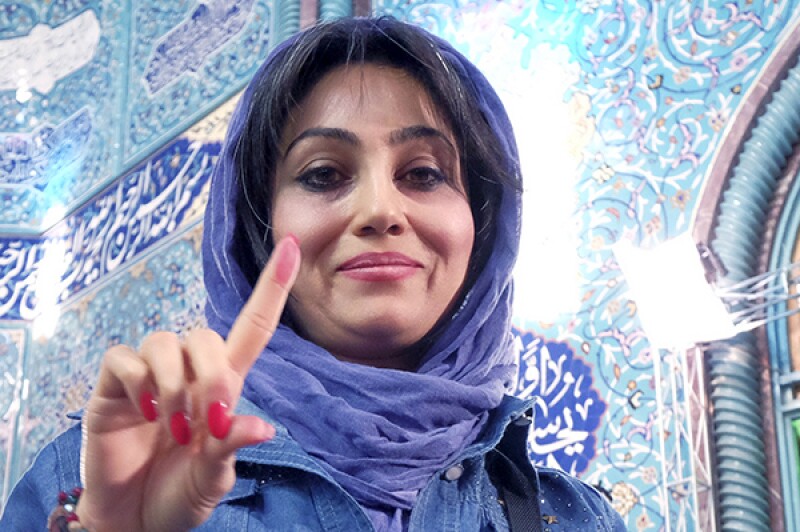
|
An Iranian woman shows her ink-stained finger after casting her vote on February 26 |
The general election held in Iran on February 26 for the new parliament and Assembly of Experts was never going to deliver an optimum outcome, certainly not in terms of altering the balance of power or foreign policy, which remains vested in the Supreme Leader.
A second round of elections is scheduled for April 29, but the coalition of conservatives, centrists and reformists requires just 10 more seats in parliament to gain overall majority.
Thus, despite hardliners trying to influence the process by rejecting candidates, the fact reformers have done well at all in these elections signals the country is behind the economic agenda of president Hassan Rouhani, which is promising for the investor outlook, especially since the economy is still struggling with floundering oil prices.
Extreme risks softening
Iran remains an extreme risk for foreign investors. Its country risk score is just 31 points out of a maximum 100, placing it firmly within the lowest of five tiered categories – containing the world’s worst investment risks – at 130th out of 186 countries surveyed.
Yet the agreement finally signed between Iran and the five permanent members of the UN’s Security Council, plus Germany (P5+1), gradually dispenses with western sanctions in return for the eradication of some nuclear hardware and ongoing monitoring.
Rouhani successfully tackled inflation as the number-one economic problem, lowering it from around 40% in 2013 to less than 10% by January 2016.
The survey score for monetary policy/currency stability, although still low, has hugely improved.
Consequently, Iran’s country risk score increased, diverging from Iraq’s last year:
Not all of Iran’s risk factors have been improving, and there are many people who still harbour reservations about its nuclear ambitions and relations with Saudi Arabia on the one hand and Israel on the other.
Its internal politics, too, is complex, often with little distinction between the hardliners and reformists, although the government-stability score has improved and a mandate for Rouhani means the prospect of pro-market economic reforms.
Indeed, in purely economic terms, there are reasons to be optimistic. Its subsidy reform, for example, has lowered the fiscal deficit to less than 2% of GDP.
Rouhani unveiled a sixth five-year development plan for 2016-20 in conjunction with the fiscal budget to March 2017, with an ambitious 8% GDP growth target relying on attracting more foreign capital.
There are pro-market plans to introduce a derivatives market, and amend labour laws and the hydrocarbons extraction law to allow more foreign participation.
“Sanctions relief coupled with sound policies would improve economic conditions,” says the IMF in a recent note.
Resistance to change will be strong from both the left and the right.
However, with Rouhani likely to win re-election in 2017, Iran’s prospects are now brighter than they have been for some time.
This article was originally published by ECR. To find out more, register for a free trial at Euromoney Country Risk.